| |
This page shows the results of testing the OPA2134/BUF634 portable headphone amplifier (described here) with the borrowed oscilloscope (described here). |
|
| | | |
| |
Power Supply Measurements |
|
| | | |
| |
First, I measured the power supply, both the +15 VDC and -15 VDC rails. I measured the power supply with no input and no load. |
|
| | | |
| |
The results showed at the lowest, most sensitive voltage setting (10 mV/cm) a signal with a little bit of ringing, but still flat, with no hint of ripple or noise: |
|
| | | |
| |
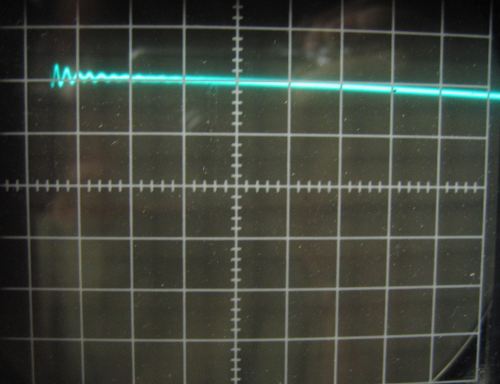 |
| | | |
| |
1 KHz Measurements |
|
| | | |
| |
Next, I measured the output of a 1 KHz, 2 V signal from the signal generator. I measured each channel with no load. |
|
| | | |
| |
The response is significantly different from the input signal shown here. Below is with 1 KHz input without a load measured at 0.2 ms/cm and 200 mV/cm: |
|
| | | |
| |
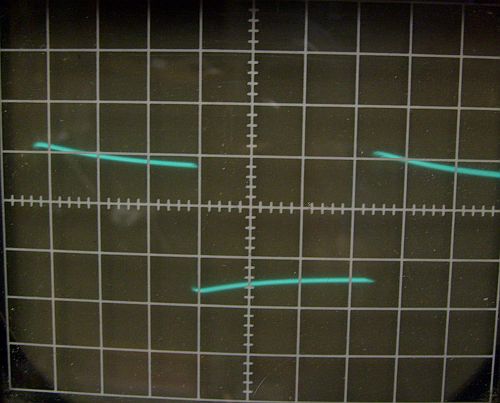 |
| | | |
| |
As you can see, the slope of the top of the square wave suggests that the low-frequency response of the amplifier is less than idea. The slope reflects a lack of low frequency bandwidth. Not surprising, considering that this is a simple op-amp based portable amplifier with a limited power supply. |
|
| | | |
| |
10 KHz Measurements |
|
| | | |
| |
Next, I measured the output of a 10 KHz, 2 V signal from the signal generator. I measured each channel, with no load. |
|
| | | |
| |
Below is with 10 KHz input measured at 20 us/cm and 200 mV/cm: |
|
| | | |
| |
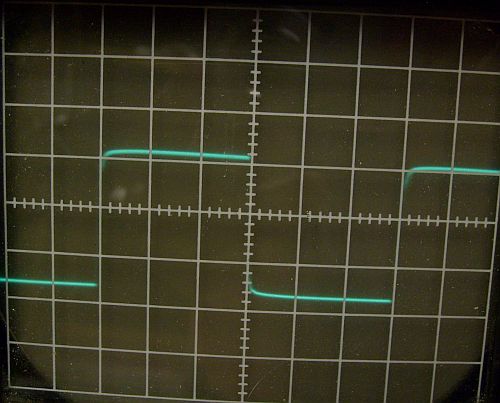 |
| | | |
| |
The response is similar to that seen with the Gilmore headphone amplifier seen here. The rounded leading corners reflect a limited high-frequency bandwidth, and the sharp right corner is due to a phase shift at higher frequencies. |
|
| | | |
| |
Below is with 10 KHz input measured at 10 us/cm and 200 mV/cm showing a close-up of the wave form: |
|
| | | |
| |
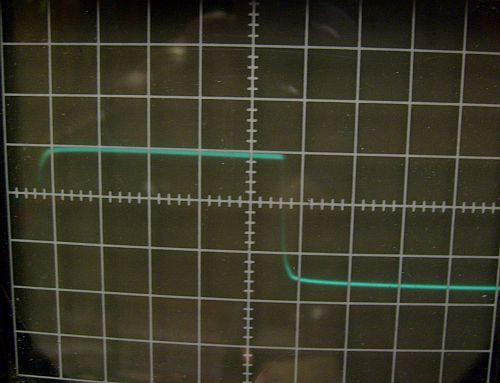 |
| | | |
| |
100 KHz Measurements |
|
| | | |
| |
Last, I measured the output of a 100 KHz, 2 V signal from the signal generator. I measured each channel, with no load. |
|
| | | |
| |
Below is with 100 KHz input measured at 5 us/cm and 200 mV/cm: |
|
| | | |
| |
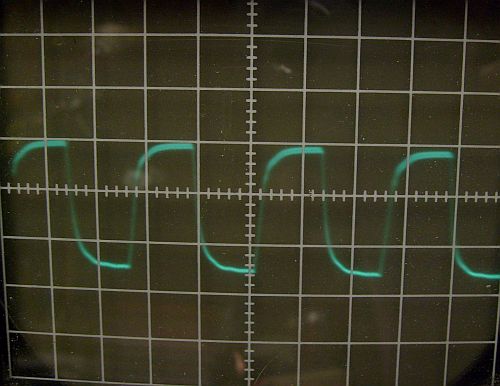 |
| | | |
| |
The response is similar to that seen with the Gilmore headphone amplifier seen here. Again, the high-frequency limitations of the amplifier significatly round the leading corner of the square wave. But again, what do you expect from a portable headphone amplifier like this? |
|
| | | |
| | | |




